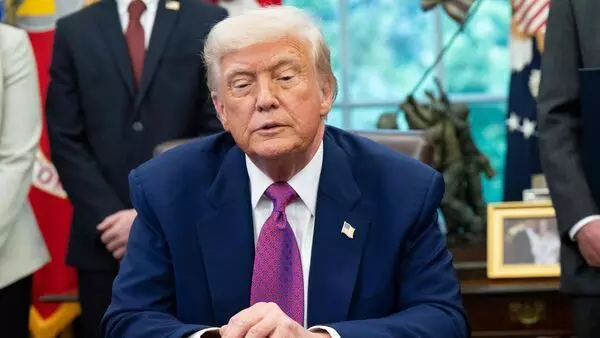Donald Trump Repeats India-Pakistan Ceasefire Claim, Sparks Outrage with Use of ‘Nasty N Word’

US President Donald Trump has once again stirred controversy by reiterating his claim of mediating a ceasefire understanding between India and Pakistan, while also raising eyebrows with his reference to the “N word” — a phrase he used to describe the risk of nuclear conflict between the two nations.
In a recent interview with Fox News during his Middle East visit, Trump claimed credit for de-escalating tensions between the two South Asian neighbours, calling it “one of the biggest successes” he’s ever been acknowledged for. According to him, the conflict had reached a dangerously critical point after the Pahalgam terror attack, pushing both sides “stronger and stronger” toward nuclear confrontation.
“It was getting deeper. Everyone was stronger, stronger to a point where the next one was gonna be, you know what… the N word,” he said. “You know what the N word is, right? It’s the N word. That’s a very nasty word… used in a nuclear sense.”
However, the Indian government has rejected these assertions. In an official statement, the Ministry of External Affairs made it clear that the ceasefire understanding was a result of direct, bilateral communication between the Directors General of Military Operations (DGsMO) of India and Pakistan — without any third-party intervention. External Affairs Ministry spokesperson Randhir Jaiswal reiterated India’s position, stating that all matters related to Jammu and Kashmir are to be resolved bilaterally between India and Pakistan.
This is not the first time Trump or his administration has claimed a mediating role in Indo-Pakistani tensions. Earlier he offer to intervene in the Kashmir dispute was also firmly rejected by New Delhi, which stressed that such matters are internal and must be handled directly between the two countries.
The Ceasefire and Operation Sindoor
The ceasefire understanding was announced jointly by India and Pakistan last week, with both sides agreeing to halt hostilities across land, air, and sea. But hours after the announcement, tensions flared again when drones were spotted over Jammu and Kashmir, followed by explosions that triggered Indian air defence responses to neutralise potential aerial threats.
The lead-up to the ceasefire came after India launched Operation Sindoor — a series of precision strikes targeting terrorist infrastructure across Pakistan and Pakistan-occupied Kashmir. Over 100 militants affiliated with groups like Jaish-e-Mohammed, Lashkar-e-Taiba, and Hizbul Mujahideen were reportedly neutralised.
Pakistan retaliated with cross-border shelling and attempted drone attacks targeting Indian military bases, following the Indian operations. India, in turn, struck back at Pakistani radar stations, airfields, and communication hubs, heightening fears of full-scale conflict.
The situation on the ground remains volatile, and both countries remain on high alert, while the ceasefire currently holds on paper.
